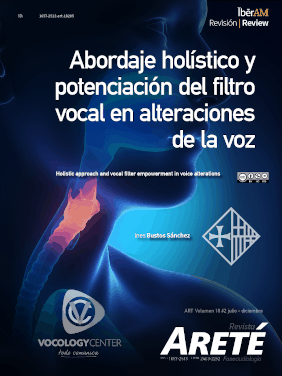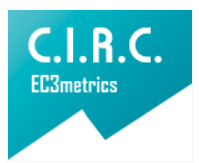Abordaje Holístico y Potenciación del Filtro Vocal en Alteraciones de la Voz
Holistic Approach and Vocal Filter Empowerment in Voice Alterations
Contenido principal del artículo
El proceso de configuración de una disfonía funcional sin o con lesión benigna en las cuerdas vocales - en este caso a causa de mal uso y/o abuso vocal-, pone en evidencia una descompensación o pérdida del delicado equilibrio músculo-esquelético general y, particularmente, del funcionamiento de los subsistemas implicados en la producción vocal. Como consecuencia, se generan mecanismos compensatorios que la intervención fonoaudiológica ha de volver a “ajustar”. En este artículo se propone el abordaje holístico de estas alteraciones de la voz, que ha de incluir la consideración del cuerpo como un macro sistema músculo esquelético. A su vez, se plantea la conveniencia de plantear un enfoque fisiológico por su carácter holístico. Este enfoque fisiológico no implica descartar cualquier otro enfoque que adapte la terapia vocal a las particularidades de cada paciente.
En este contexto, el presente artículo quiere presentar un método complementario a la terapia vocal, desarrollado por Rudolf Steiner denominado El arte de la palabra, así como algunas aplicaciones prácticas y su transferencia al ámbito fonoaudiológico. Podrá verse la importancia de abordar específicamente el trabajo articulatorio a nivel del filtro vocal, como última fase del proceso de producción de la voz; este trabajo específico, facilitará una mayor transferencia de esquemas propioceptivo-articulatorios al contexto comunicativo cotidiano del paciente, según sean las necesidades y exigencias vocales requeridas.
Descargas
Datos de publicación
Perfil evaluadores/as N/D
Declaraciones de autoría
Indexado en
- Sociedad académica
- Bogotá: Corporación Universitaria Iberoamericana
- Editorial
- Bogotá: Corporación Universitaria Iberoamericana
Detalles del artículo
Angel, L. (2017). Terapia vocal. Práctica basada en la evidencia. Bogota: CO: Universidad Nacional de Colombia. Obtenido de http://www.uneditorial.com/terapia-vocal-44-practica-basada-en-evidencia-medicina.html
Bustos Bustos, I. (2016). Cuerpo voz movimiento Taller para la intervencion logopedica. Gijon: La fabrica de libros.
Chubarovsky, T. (2015). La fuerza curativa de la voz y la palabra. Extremadura: voz y movimiento. Obtenido de https://www.tamarachubarovsky.com/producto/la-fuerza-curativa-del-a-voz-y-la-palabra/
Farias, P. (2016). Guía clínica para el especialista en laringe y voz. Buenos Aires: Arkadia. Obtenido de http://www.editorialakadia.com/index.php?route=product/product&product_id=3238J.
Laver. (1980.). The Phonetic Description of Voice Quality. Cambridge University.
Martinez, E., & Fernandez, A. (2007). Manual de fonética española: Articulaciones y sonidos del español. (Ariel, Ed.) Obtenido de https://books.google.com.co/books/about/Manual_de_fon%C3%A9tica_espa%C3%B1ola.html?id=aKV-ngEACA AJ&redir_esc=y
Moller, K. (2006). The accent method . Voicesource publishing .
Pankas, J., Sepic , T., Pitlović, V., Rosso, M., & Starcević, R. (Septiembre de 2011). Importance of correct therapeutic procedure selection in voice recovery. Coll Antropol, 35, 259-62. Obtenido de https://www.ncbi.nlm.nih.gov/pubmed/22220448
Sánchez, I. (2013). Intervencion logopedica en trastornos de la voz. Paidotribo.
Smith, S., & Thyme, K. (1976). Statistic research on changes in speech due to pedagogic treatment (the accent method. Folia Phoniatr, 28(2), 98-103. Obtenido de https://www.ncbi.nlm.nih.gov/pubmed/1002069
Steiner, R. (2015). La formacion de la palabra y el arte dramatico. Madrid.Fuente: elaboración propia del autor 63AretéISSN-L: 1657-2513 ART 18 (2) pág. 55 -64Bustos Sánchez


















